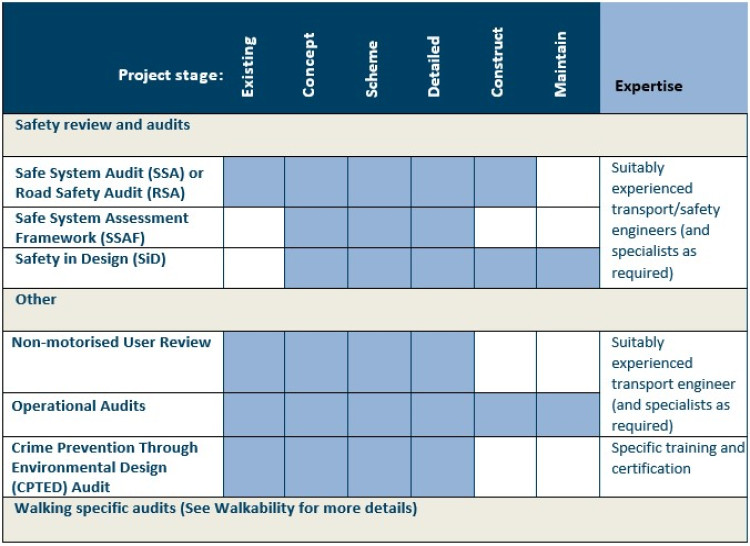Reviews and audits should be undertaken as part of the planning and design process for projects, and post construction. Review methods for existing street networks and how audits can be used to evaluate existing walking routes and designs is outlined in more detail under Walkability.
These review methods include
Some of these methods can also be used to assess proposals.
The terms ‘review’ and ‘audit’ are sometimes used interchangeably, leading to some confusion about their role; in practice there is no consistent distinction between them. There are also a range of different methods available to assess provision for walking in both existing and proposed street environments. It is likely that a particular project will require a number of different audit/review processes to be undertaken at different stages.
Audits are a formal process to identify deficiencies in provision and potentially to suggest opportunities for improvement. Typically, they are undertaken by parties that are independent of the project development/design team and the client. They can be undertaken during the development of a project or as part of ongoing management and monitoring of an existing street network.
There are a wide variety of different audit processes available for use in New Zealand at different project stages; some of the main ones are summarised in the table below. These audits can be used to assess designs for walking, and transport projects that affect people walking. Other methods are outlined in Walkability.
Table: Audit and review process and when they can be applied

A ‘peer review’ is a review of a concept, scheme or detailed design undertaken by a suitably qualified and experienced person independent of the design team. It is good practice to include peer reviews during the design process, and they are often required by road controlling authorities. Unlike safety audits and other technical review processes, there is limited guidance available regarding the peer review process. However, road controlling authorities may have developed their own peer review processes and templates, so designers should enquire about this in the first instance. Engineering NZ also has a practice note (Engineering NZ, 2018) that covers requirements for peer review[1].
In lieu of any available structured process or report template, the principles of pedestrian networks could be used as a basis for a review.
[1] Engineering NZ. (2018). Practice Note 2: Peer Review(external link)